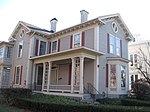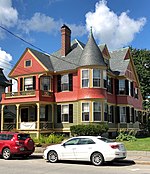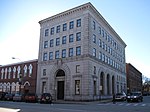Capitol Center for the Arts

The Capitol Center for the Arts is an entertainment venue in Concord, New Hampshire, United States, which features a 1,304-seat theatre designed with an Egyptian motif. The center opened in its current form in 1995 after a multiyear renovation of the Capitol Theatre, which had existed in the same location from 1927 to 1989. The theatre is equipped to host major Broadway shows, and has played host to the Billy Joel musical Movin' Out, pianist George Winston, and humorist David Sedaris. The renovation of the Capitol Center was made possible by $4.2 million in donations received for the then-newly formed center, with Chubb Life providing the majority of the support. The Chubb Theatre was named in honor of the company that made the center possible. Volunteers, some 250 of them, also contributed 3,000 hours of service to repaint the interior and restore the Egyptian motif. Paul Hodes, who subsequently became a congressman from New Hampshire, was also instrumental in the renovation and reopening of the center, heading up the effort at the urging of fellow lawyer and patron of the arts Martin L. Gross of Concord.
Excerpt from the Wikipedia article Capitol Center for the Arts (License: CC BY-SA 3.0, Authors, Images).Capitol Center for the Arts
Concord Street, Concord
Geographical coordinates (GPS) Address Website External links Nearby Places Show on map
Geographical coordinates (GPS)
| Latitude | Longitude |
|---|---|
| N 43.201111111111 ° | E -71.535 ° |
Address
Capitol Center For The Arts
Concord Street 44
03301 Concord
New Hampshire, United States
Open on Google Maps









